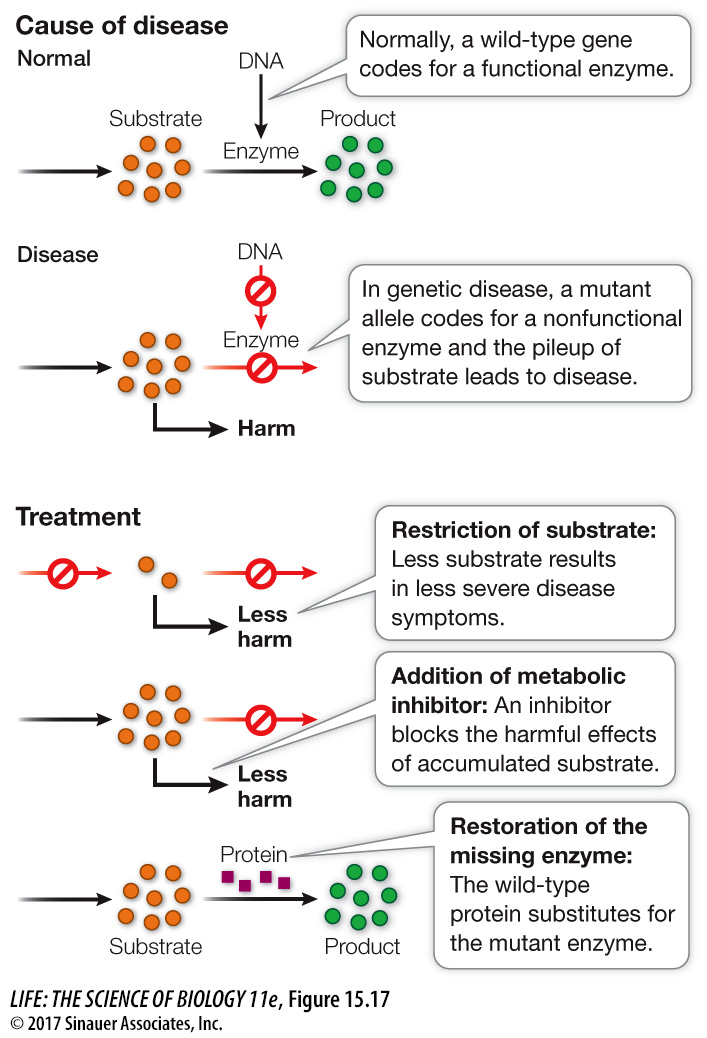Genetic diseases can be treated by modifying the phenotype
Altering the phenotype of a genetic disease so that it no longer harms an individual is commonly done in one of three ways: by restricting the substrate of a deficient enzyme, by inhibiting a harmful metabolic reaction, or by supplying a missing protein product (Figure 15.17).

RESTRICTING THE SUBSTRATE Restricting the substrate of a deficient enzyme is the approach taken when a newborn is diagnosed with PKU. In this case, the deficient enzyme is phenylalanine hydroxylase, and the substrate is phenylalanine (see Figure 15.6). The infant’s inability to break down phenylalanine in food leads to a buildup of the substrate, which causes the clinical symptoms. So the infant is immediately put on a special diet that contains only enough phenylalanine for immediate use. Lofenelac, a milk-
People with PKU are generally advised to stay on a low-
METABOLIC INHIBITORS In Key Concept 11.7 we described how drugs that are inhibitors of various cell cycle processes are used to treat cancer. Drugs are also used to treat the symptoms of many genetic diseases. As biologists have gained insight into the molecular characteristics of these diseases and the specific proteins involved, a more specific approach to treatment is taking shape. Targeted therapies are being developed, especially for cancer, and some have resulted in life-
SUPPLYING THE MISSING PROTEIN An obvious way to treat a disease caused by the lack of a functional protein is to supply that protein. This approach is used to treat hemophilia A, a disease in which blood factor VIII is missing and blood clotting is impaired (see Table 15.2). In the past, the missing protein was obtained from blood. Sometimes, however, blood carries contaminants, such as viruses (e.g., HIV) or other pathogens that could harm the recipient. Now human clotting proteins are produced by recombinant DNA technology (see Chapter 18), making it possible to provide the protein in a much purer form.
Unfortunately, the phenotypes of many diseases caused by genetic mutations are very complex. In these cases, simple interventions like those we have just described do not work. Indeed, a recent survey of 351 diseases caused by single-